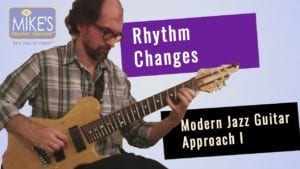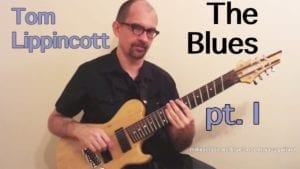Description
Melodic Minor Complete part 1: Theory
The ascending, or “jazz”, melodic minor scale is one of the most central and recognizable sounds in jazz. Late 19th and early 20th century composes like Debussy and Stravinsky used this sound in their music, and jazz musicians soon afterward began to adopt this tonal color. Melodic minor has become an essential part of any developing jazz musician’s vocabulary, and mastery of this scale is considered to be mandatory.
Because the melodic minor scale is so prevalent and has been in widespread use for so long, there are a multitude of instructional materials available covering the use of this scale in jazz. Many jazz musicians, however, don’t have a thorough or complete understanding of the theory behind the use of the scale, and still more don’t have as extensive a mastery of the structure as they could. This two-part class presents the melodic minor scale in a thorough, complete way, with the goal of giving a total understanding of how it has been, and continues to be, used by master jazz musicians.
Part one of the class breaks down the theory, revealing how, why, when, and where to use the scale and providing a clear explanation of the modes and many different techniques to make learning and utilizing them easier. Part one could be used by any jazz musician interested in gaining a more expansive knowledge of the melodic minor scale. Guitar fingerings and tablature are given, but traditional musical notation is also used throughout so that any instrumentalist or vocalist can benefit.
Part two of the class, which is more guitar-centric, presents a methodical and comprehensive way to gain mastery over the melodic minor scale, with numerous examples and exercises for increasing fluency. Part two also presents some imaginative and exciting ideas for generating new musical sounds with the scale, both for comping/chordal playing and single-note soloing.
Melodic Minor Complete part 1: Theory covers:
• basic structure and sound of the scale
• detailed breakdown of the seven modes, including different common names for each
• shortcuts for remembering which melodic minor scale goes with which chord and/or usage
• use of the augmented major seventh upper structure for all seven modes, with shortcuts for remembering which chord or arpeggio goes with which usage
• tritone substitution and its relationship to the Lydian dominant and altered sounds
• the “modal” modes and their uses
• the minor IV to I progression and its relationship to the Lydian dominant sound
• an alternate, internally-consistent way of conceptualizing the seven modes
• real-world examples of each of the uses of the melodic minor modes
• three easy fingerings for the augmented major seventh arpeggio that guitarists can use as a quick-start approach to the melodic minor sound
• running time: 104 minutes
• includes18 pages of written examples and exercises
• All musical examples from the video are provided in music notation, and guitar-specific examples are given in tablature and music notation.
• Each example performance in the video is titled and numbered for easy navigation.
• MP3 backing tracks for written examples
Melodic Minor Complete – Part I: Theory Class Content | Tom Lippincott
Melodic Minor Complete part 1: Theory
The ascending, or “jazz”, melodic minor scale is one of the most central and recognizable sounds in jazz. Late 19th and early 20th century composes like Debussy and Stravinsky used this sound in their music, and jazz musicians soon afterward began to adopt this tonal color. Melodic minor has become an essential part of any developing jazz musician’s vocabulary, and mastery of this scale is considered to be mandatory.
Because the melodic minor scale is so prevalent and has been in widespread use for so long, there are a multitude of instructional materials available covering the use of this scale in jazz. Many jazz musicians, however, don’t have a thorough or complete understanding of the theory behind the use of the scale, and still more don’t have as extensive a mastery of the structure as they could. This two-part class presents the melodic minor scale in a thorough, complete way, with the goal of giving a total understanding of how it has been, and continues to be, used by master jazz musicians.
Part one of the class breaks down the theory, revealing how, why, when, and where to use the scale and providing a clear explanation of the modes and many different techniques to make learning and utilizing them easier. Part one could be used by any jazz musician interested in gaining a more expansive knowledge of the melodic minor scale. Guitar fingerings and tablature are given, but traditional musical notation is also used throughout so that any instrumentalist or vocalist can benefit.
Part two of the class, which is more guitar-centric, presents a methodical and comprehensive way to gain mastery over the melodic minor scale, with numerous examples and exercises for increasing fluency. Part two also presents some imaginative and exciting ideas for generating new musical sounds with the scale, both for comping/chordal playing and single-note soloing.
Melodic Minor Complete part 1: Theory covers:
• basic structure and sound of the scale
• detailed breakdown of the seven modes, including different common names for each
• shortcuts for remembering which melodic minor scale goes with which chord and/or usage
• use of the augmented major seventh upper structure for all seven modes, with shortcuts for remembering which chord or arpeggio goes with which usage
• tritone substitution and its relationship to the Lydian dominant and altered sounds
• the “modal” modes and their uses
• the minor IV to I progression and its relationship to the Lydian dominant sound
• an alternate, internally-consistent way of conceptualizing the seven modes
• real-world examples of each of the uses of the melodic minor modes
• three easy fingerings for the augmented major seventh arpeggio that guitarists can use as a quick-start approach to the melodic minor sound
• running time: 104 minutes
• includes18 pages of written examples and exercises
• All musical examples from the video are provided in music notation, and guitar-specific examples are given in tablature and music notation.
• Each example performance in the video is titled and numbered for easy navigation.
• MP3 backing tracks for written examples
| Melodic Minor Complete - Part I: Theory | |||
| Melodic Minor Complete – Part I: Theory | 01:44:00 | ||






